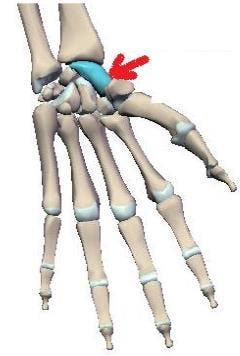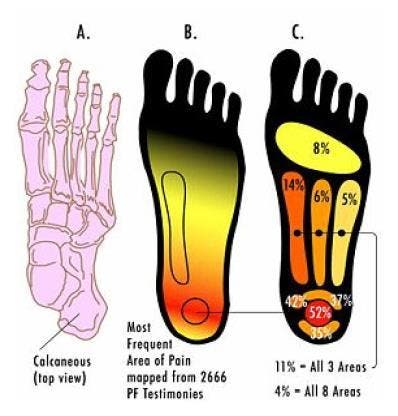In the last decade, the sport that has grown the most in countries like Brazil, Argentina and Spain has undoubtedly been paddle tennis. This statement is backed by the numbers:
- Massive increase in federative licenses: 101% increase in player licenses in Spain from 1998 to 2011) (1)
- Paddle tennis is the second most practiced sport in Argentina (up to 4 million people practice it) (2)
The reason for this great boom may be that it is an attractive sport for any public due to the characteristic size of the track (3), for having a moderate physical demand (4) and accessible to all.

Factors that influence the incidence of injuries in paddle tennis (5,6)
We find 2 types of factors, which are:
Extrinsic factors (exposure to risk factors)
- physiological characteristics
- biomechanical characteristics
- psychological characteristics
- Lack of concentration
- Age
- body deterioration
- Injury history and inadequate recovery
- Lack of physical preparation
- Feeding
- Fatigue
- overtraining
- Carrying out risk behaviors
- do not heat
- Motivation
- Stress
- Anxiety
Intrinsic factors (athlete's predisposition)
- Environmental condition deficiencies
- Type and condition of sports flooring
- intense game
- equipment
Most frequent injuries in padel
According to an epidemiological study of injuries in Spain (7), paddle tennis is the 6th sport with the highest number of injuries (soccer ranks first, followed by futsal, tennis, athletics and basketball). In addition, it is the 2nd sport that requires the highest percentage of rehabilitation, as can be seen in the following image:
The most frequent movements and displacements of the paddle can have a damaging effect on the foot; specifically in the ankle joint.

García Acedo and Ares Bella (8) pointed out that in their clinical experience, the three most common injuries in paddle tennis are ankle sprains (27.27% of injuries), micro-ruptures of gastrocnemius (18.18%) and sesamoiditis and plantar fasciitis (18.18%). More than 50% of the players who start in padel say they have suffered a sports injury while practicing this sport (9)
Following studies and research, the 9 most common injuries in paddle tennis are:
Ankle sprain
The External Lateral Ligament (LLE) is more affected than the Internal Lateral Ligament (LLI) in padel (10). The LLE is formed by the anterior talar fibular ligament, calcaneal fibular ligament, and posterior talar fibular ligament. Taking into account the damaged structures, there are 3 degrees of sprains.
To know more about ankle sprain
What is a Grade 1, 2 and 3 Ankle Sprain?
In this video we show you what an ankle sprain is and its different degrees
Internal calf rupture
This injury occurs after a situation where the paddle tennis player makes an unexpected and violent start or sprint. There is a very sudden contraction of the internal twin and this can cause a partial or total rupture of it.
The following video explains the treatment through stretching, self-massage and empowerment.
Rupture of fibers of the gastrocnemius. Treatment with exercises, stretching and massages.
In this video we will show you a treatment for this injury through exercises, stretching and massages
knee ligament injuries
An early diagnosis is important (11). There may be a distension or a (partial or total) rupture of the ligament.
We highlight the injury of the Anterior Cruciate Ligament (ACL), Posterior Cruciate Ligament (PCL), Internal Lateral Ligament (LLI) and External Lateral Ligament (LLE).
Preventive programs for knee sprains have been based mainly on the development of basic motor skills, compensatory lower body strength training, and stability and proprioception exercises (12).
low back pain
In this sport, the spinal column and specifically the lower back moves continuously in all possible planes: flexion, extension, rotation and lateral flexion. There are movements (and a combination of them) that put the entire posterior musculature of the back under tension and, as a consequence, the entire lumbo-pelvic area can be affected (13).
Different studies have shown how healthy and injury-free players had symmetrical force development in the directions of both left and right rotations (14).
Is exercise part of the treatment of low back pain? Bibliographic review
Rotator cuff (shoulder) tendinopathy
It involves an inflammation (tendinitis) or degeneration (tendinosis) of the tendons of the shoulder joint complex.
What is shoulder or supraspinatus tendonitis and what are its symptoms and causes?
Video about what is supraspinatus tendinitis, symptoms and causes
Epicondylitis/epitrocleitis (codo)
Lateral epicondylitis is the injury that has the highest incidence in subjects who practice paddle tennis (15).
The main cause of epicondylitis is the accumulation of microtrauma and repetitive movements of the elbow (16). Several risk factors (17) are poor hitting technique, incorrect grip, point of impact or delayed hitting, hitting with a bent arm, and misuse of the material.
Lateral epicondylitis or tennis elbow. What is it, causes, symptoms and treatment.
Causes, symptoms and treatment of lateral epicondylitis
Another common injury is epitrochleitis, on the inside of the elbow.
Scaphoid fracture
The scaphoid is a small bone that is located in the wrist. Supports constant microtrauma in paddle players. If there is a fracture, the symptoms are intense pain that persists when supporting the wrist (dorsiflexion) and when moving it towards extension (18)

eye injuries
They are those injuries that occur in the eye or in the structures surrounding them.
plantar fasciitis
Plantar fasciitis is the inflammation of the fascia found on the sole of the foot, resulting in pain and difficulty walking. Below I share a link where you can deepen about plantar fasciitis
What is plantar fasciitis?
This video explains in a simple and detailed way what plantar fasciitis consists of.
Important: Before any injury, mentioned in this post or not, you should visit a qualified physiotherapist to avoid complications. Self-care often makes injuries worse.
Bibliography
- Priego JI, Olaso J, Llana-Belloch S, Pérez Soriano P, García JCG, Sanchís MS. Padel: a quantitative study of the shots and movements in the high-performance. J Hum Sport Exerc. 2013;8(4)
- Martinez BJS-A. History of the Paddle. History of Padel. Mater For Hist Sport. 2013;(11):57–60.
- Lasaga Rodriguez MJ. Social and methodological study of Padel from the perception of technicians and players: an educational commitment [Doctoral thesis]: University of Seville; 2011., to a moderate physiological demand
- Amieba C, Salinero JJ. Overview of paddle competition and its physiological demands. AGON Int J Sport Sci. 3 (2):60–7
- Bahr, R. y Holme, I. (2003). Risk factors for sport injuries: a methodological approach. British Journal of Sport Medicine, 37 (5), 384-392.
- Knowles, S.B.,Marshall, S.W. y Guskiewicz, K.M (2006). Issues in estimating risks and rates in sports injury research. Journal of Athletic training, 41 (2), 207-215
- Garcia, C. et al. Leisure sports in Spain: epidemiology of injuries and their consequences. Epidemiological Study of Sports Injuries and their Consequences in Recreational Sport in Spain Apunts. Physical Education and Sports 2015, no. 119, 1st quarter (January-March), pp. 62-70
- García Acedo DM, Ares Bella F. Biomechanical and pathomechanical study in the practice of paddle tennis. Rev Esp Podol. 2007;(4):176–83.
- López, A. Injuries in paddle tennis. Prevention is better than play. Seville: Red Point)
- Danowski , R. and Chanussot , J.C. . (1992). Traumatology of sport. Barcelona: Masson Publishing House
- Lopez, A. (2013). Paddle tennis injuries. Prevention is better than play. Seville: Red Point.
- Maquirrain, J. y Pegey, P.J. (2006). Tennis limitations in players with an ACL deficient knee. British Journal of Sport Medicine, 4 (5), 451-453
- Perkins, R.H. y Davis, D. (2006). Musculoskeletal injuries in tennis. Physical medicine & rehabilitation clinics of North America, 17 (3), 609-‐631.
- Ellenbecker,T.S y Roetert, E.P (2004). An Isokinetic profile of trunk rotation strengh in elite tennis players. Medicine Science in Sports Exercise, 36, 1959-1963
- Alonso , R.M. , Salido , M. , Navarro , P. and Candelas , G. (2005). Epicondylitis. Seminars of the Spanish Rheumatology Foundation, 6(2), 79‑88
- Álvarez, G., Álvarez, I. and Álvarez, G. (2006). Tennis elbow (external epicondyle tendinosis): ultrasound-guided sclerosing treatment with polidocanol. About two cases. Notes: Sports Medicine, 49, 21-33
- Kelley, J.D., Lombardo, S.J., Pink, M., Perry, J. y Giangarra, C.E. (1994). Electromyographic and cinematographic analysis of elbow function in tennis players with lateral epicondylitis. American Journal of Sports Medicine, 22, 359‐363
- Lopez, A. (2013). Paddle tennis injuries. Prevention is better than play. Seville: Red Point
Source: https://www.fisioterapia-online.com



